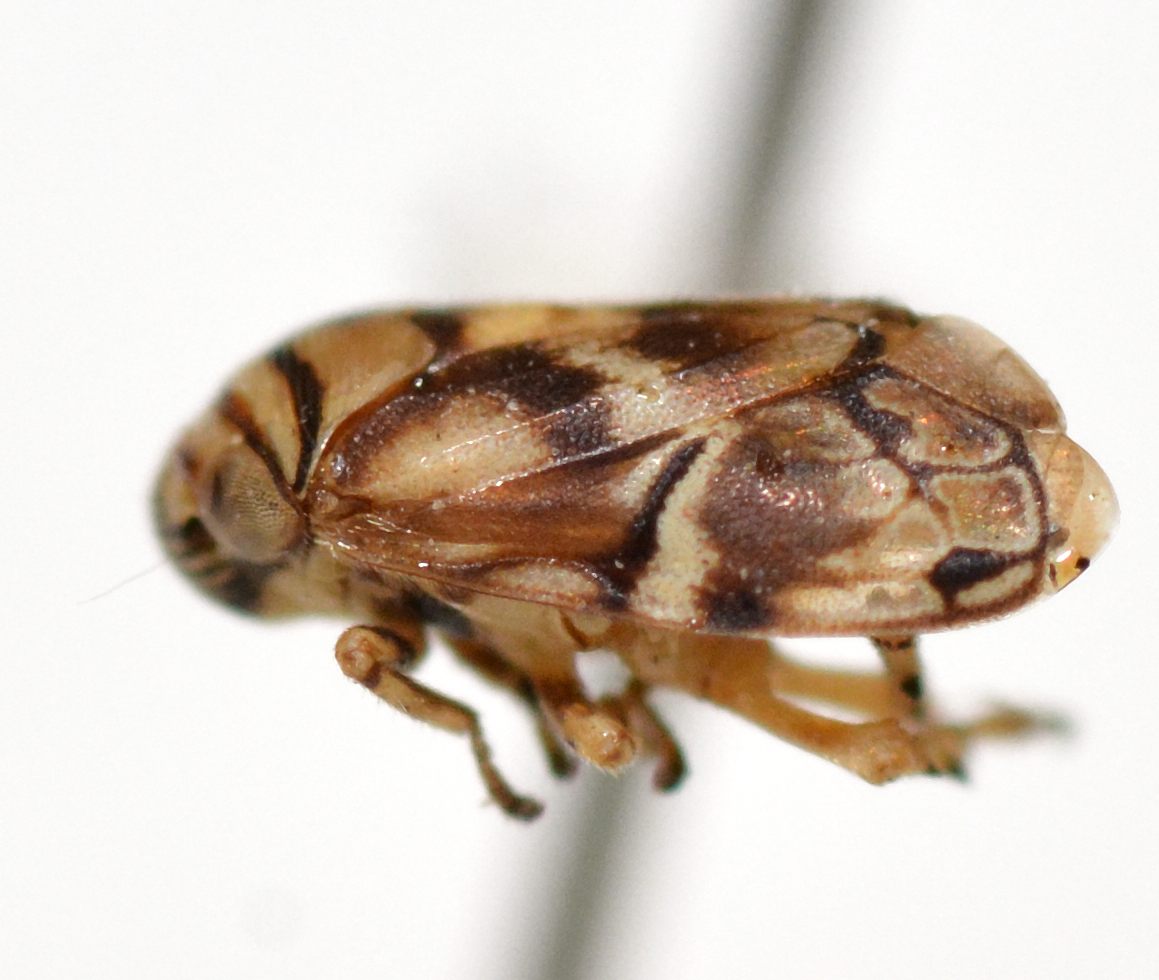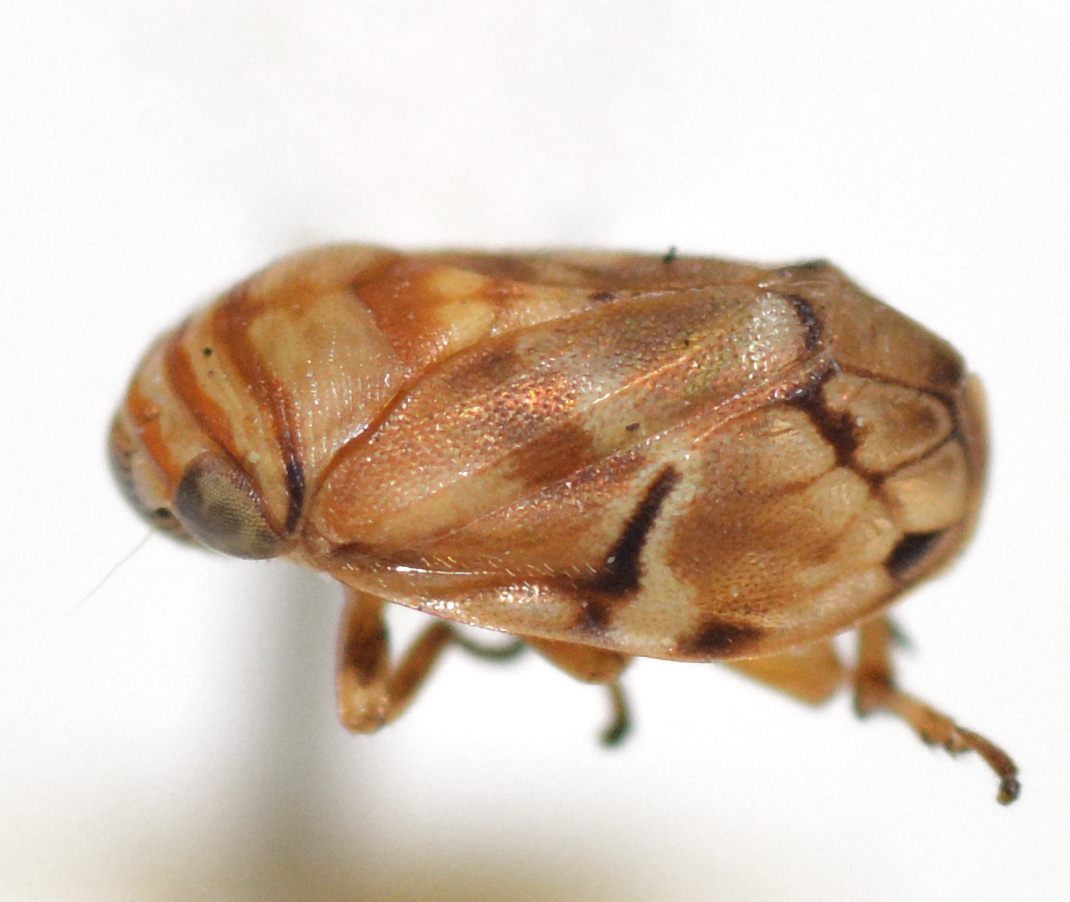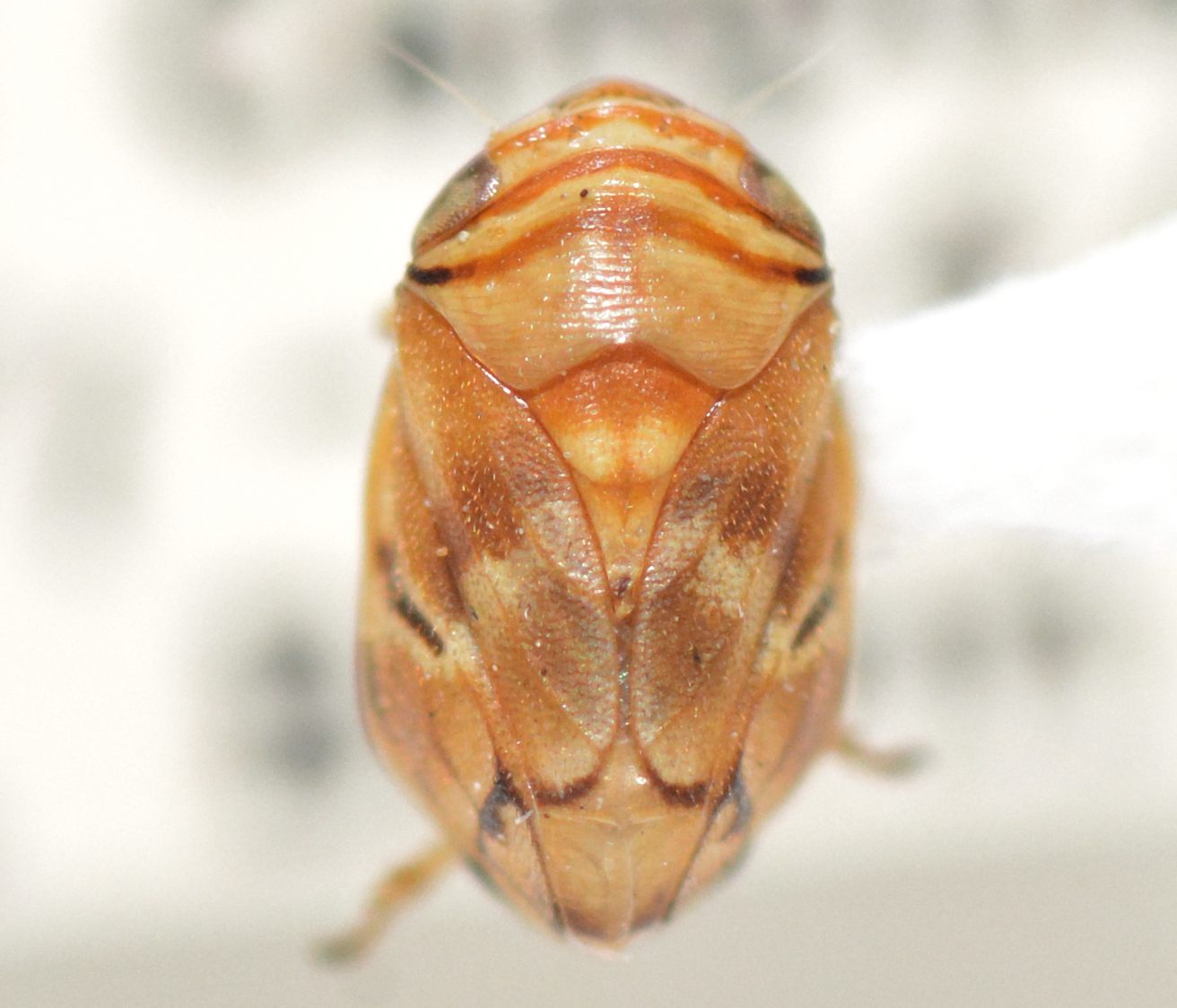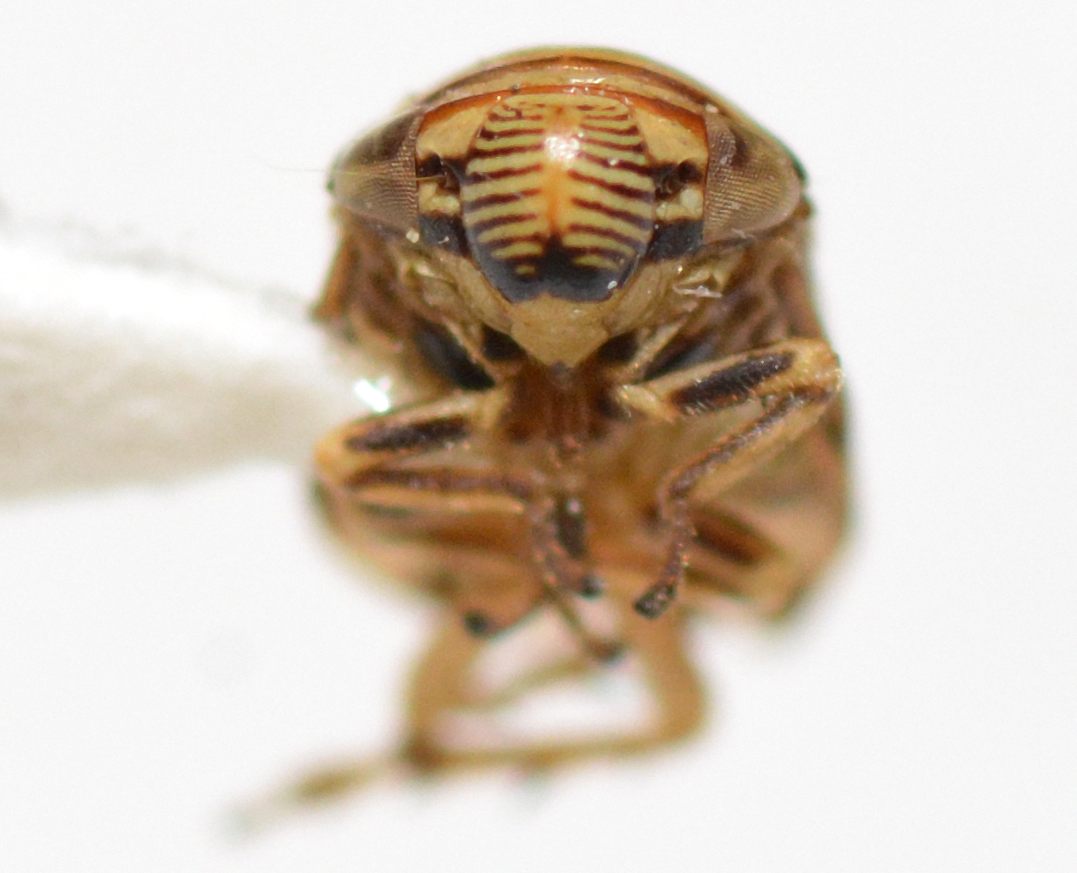
|
|
|
| synonym |
|
| description |
A reddish species with a pale zigzag transverse band across the middle of the body, and three bold reddish lines on the head and pronotum. Males can either be paler or darker than females, the latter of which tend to be fairly rufous in color. The rufous color helps set this species apart from other Clastoptera found in North Carolina, in particular C. obtusa. While dark males may resemble C. obtusa, they have more pale patches overall compared to C. obtusa which tend to be uniformly colored except for the white band and pale head; in particular, there tends to be a whitish patch near the base of each wing in both sexes that is a useful identifying mark. This species has a dark band across the face, wider in males, and can show a couple thinner dark bands between the eyes and frons. The area below the wide black band is pale. See here for a view of the face of both sexes, with the male on the bottom. Males are 3.5-3.9 mm long, while females are 3.7-4.1 mm (BG). |
| distribution |
Eastern, central, and southwestern North America (BG) |
| abundance |
Recorded primarily from the Piedmont but also mountains, possibly more abundant in the state in the right habitat. |
| seasonal_occurrence | |
| habitat |
Where red-cedar or cypress is present. |
| plant associates |
Eastern red-cedar (Juniperus virginiana), Leyland Cypress (Cupressocyparis leylandii) (DL) |
| behavior |
Can be attracted at night with a light. |
| comments |
|
status |
[Native:]
[Introduced:]
[Extirpated:] | | list_type |
[Official:]
[Provisional:] |
| adult_id | Unmistakable and widely known Identifiable from good quality photos of unworn specimens
Identifiable from photos showing undersides, or other specialized views [e.g., legs, face]
Identifiable only by close inspection of structural features or by DNA analysis NULL |
| nymph_id | Unmistakable and widely known Identifiable from good quality photos, especially where associated with known host plants
Identifiable from close inspection of specimens or by DNA analysis
Identifiable only through rearing to adulthood NULL |
| G_rank |
|
| S_rank |
|
| rank_comments |
|
| tribe |
|
| subgenus |
|
Species Photo Gallery for Clastoptera arborina Red Cedar Spittlebug |
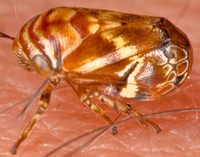 | Photo by: David Guzman
Wake Co.
Comment: attracted to light | 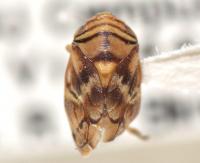 | Photo by: North Carolina State University Insect Collection
Wake Co.
Comment: male |
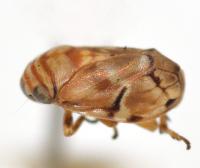 | Photo by: North Carolina State University Insect Collection
Wake Co.
Comment: female | 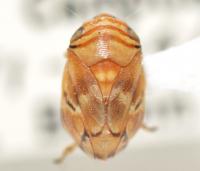 | Photo by: North Carolina State University Insect Collection
Wake Co.
Comment: female |
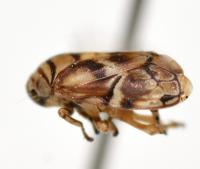 | Photo by: North Carolina State University Insect Collection
Wake Co.
Comment: male | 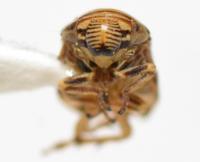 | Photo by: North Carolina State University Insect Collection
Wake Co.
Comment: male |
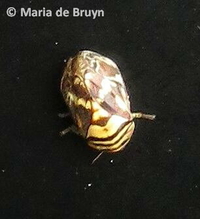 | Photo by: Maria de Bruyn
Orange Co.
Comment: Landed on my camera as I was walking around; there were several cedars in the vicinity | 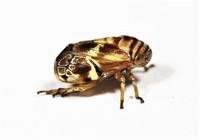 | Photo by: Rob Van Epps
Mecklenburg Co.
Comment: Attracted to UV light. Suburban yard with near woods. |
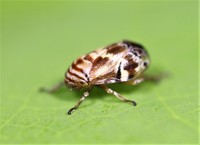 | Photo by: Rob Van Epps
Mecklenburg Co.
Comment: Attracted to UV light. Suburban yard with near woods. | 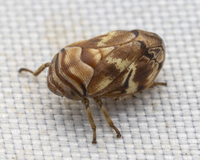 | Photo by: Solomon Hendrix
Wake Co.
Comment: attracted to light |
|

 »
»